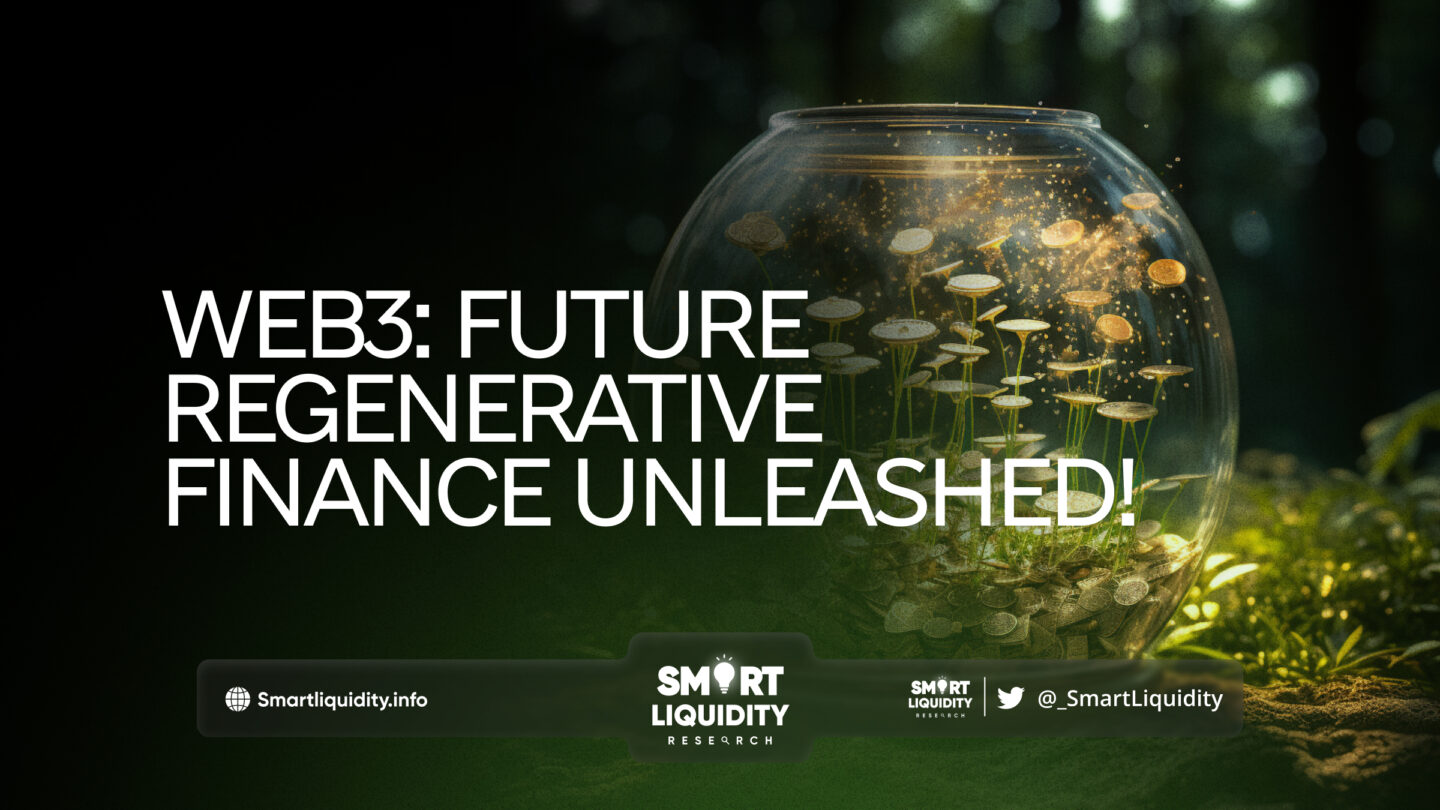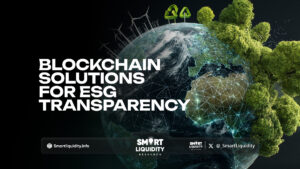The Power of Web3: Unleashing the Potential of Regenerative Finance


Web3 poised to transform not just the financial industry, but the very fabric of our society, aims to usher in a new era of Regenerative Finance (ReFi) – a paradigm shift that promises to revitalize and regenerate our financial systems. In this article, we’ll explore the concept of Regenerative Finance and how Web3 technology is driving this transformative vision.
The Evolution of Finance: From Traditional to Regenerative
Traditional finance, with its centralized institutions, has long been criticized for its lack of inclusivity, transparency, and sustainability. The 2008 financial crisis and the subsequent economic downturns exposed the vulnerabilities of this system. It became evident that we needed a more resilient and equitable financial framework.
ReFi represents a paradigm shift in the way we approach investments. Unlike traditional finance, which primarily focuses on maximizing financial returns, regenerative finance embraces a holistic approach that takes into account the regeneration of both natural and social capital. It recognizes the interconnectedness of economic, social, and environmental systems, seeking to invest in projects that generate positive impacts across these domains. But how does Web3 fit into this equation?
Key Principles of ReFi
ReFi focuses on long-term, ecosystem-wide benefits. It seeks to nurture, rather than deplete, the resources it interacts with.
🔄 Circular Economies of Value
ReFi is designed to foster circular economies where value continuously flows, benefiting all participants. This is achieved through mechanisms like staking, yield farming, and liquidity mining, which incentivize users to actively participate in the ecosystem.
🪙 Tokenomics for Sustainability
Tokens in a ReFi system are not just units of value, but representations of ecological or economic resources. They can be designed to incentivize actions that contribute to the health and sustainability of the ecosystem.
🌳 Proactive Environmental Stewardship
A cornerstone of ReFi is its commitment to environmental sustainability. Through mechanisms like proof-of-stake (PoS) consensus algorithms and carbon offsetting initiatives, it seeks to minimize the environmental footprint of blockchain networks.
🗳️ Inclusive Governance and Decision-Making
ReFi embraces a decentralized governance model where decisions are made collectively by the community. This ensures that the interests of all stakeholders are considered, leading to more equitable outcomes.
🧩 Resilience and Adaptability
The ReFi model is designed to be adaptable to changing circumstances. It is equipped with mechanisms that allow the system to respond to challenges, ensuring its long-term viability.
Driving Sustainable Development through Web3
The integration of Web3 and ReFi can have far-reaching implications for sustainable development. Let’s explore some of the key benefits that arise from this synergy:
⚡ Accelerating Impactful Projects
By providing a transparent and efficient platform for project registration and impact tracking, Web3 streamline the process of identifying and supporting impactful projects. This accelerates the deployment of resources towards initiatives that contribute to the regeneration of natural and social capital, fostering sustainable development at a faster pace.
🚧 Mitigating Fraud and Corruption
The decentralized nature of Web3 reduces the risks associated with fraud and corruption. The transparency and immutability of blockchain technology enable the detection and prevention of fraudulent activities, ensuring that investments are channeled towards legitimate and impactful projects. This fosters an environment of integrity and accountability within the regenerative finance ecosystem.
♻️ Enabling Long-Term Sustainability
ReFi, powered by Web3, lays the foundation for long-term sustainability by promoting investments in projects that have lasting positive impacts. By considering environmental, social, and governance (ESG) factors, investors can allocate their capital to initiatives that prioritize sustainable practices and contribute to the well-being of future generations.
Tokenizing carbon credits: ReFi projects are tokenizing carbon credits, which are tradable certificates that represent the right to emit a certain amount of carbon dioxide or other greenhouse gasses. This makes it easier for individuals and businesses to invest in carbon offset projects and support climate action.
Funding renewable energy projects: ReFi projects are also being used to fund renewable energy projects, such as solar and wind farms. This can help to reduce our reliance on fossil fuels and accelerate the transition to a clean energy future.
Supporting sustainable agriculture: ReFi projects are being used to support sustainable agriculture practices, such as regenerative farming and agroforestry. This can help to improve soil health, reduce water pollution, and increase biodiversity.
Empowering underbanked communities: ReFi projects are also being used to provide financial services to underbanked communities around the world. This can help to reduce poverty and inequality and promote economic development.
Real-World ReFi Web3 Projects
Here are a few specific examples of Web3 projects that are using ReFi principles:
| Project | Description | Key Features |
| KlimaDAO | A decentralized autonomous organization (DAO) that aims to reduce carbon emissions by burning carbon credits. |
|
| Toucan Protocol | A protocol that allows users to buy and sell carbon credits on the blockchain. |
|
| Offsetra | A carbon offsetting platform that uses blockchain technology to make carbon offsets more transparent and accessible. |
|
| Regen Network | A platform that allows users to invest in regenerative agriculture projects. |
|
| Moss Earth | A platform that allows users to buy and sell Amazon rainforest land on the blockchain. |
|
| SolarDAO | A DAO that owns and operates a solar farm in Puerto Rico. |
|
The Path Forward
As we dive deeper into the Web3 era, it’s essential to embrace the potential of ReFi fully. This means supporting projects and initiatives that prioritize sustainability, transparency, and inclusivity. It means rethinking our approach to finance, viewing it as a tool not just for personal gain but for the betterment of society and the planet.
Conclusion
In conclusion, Web3 and Regenerative Finance represent a profound shift in how we approach financial systems. They empower individuals, strengthen communities, and offer solutions to some of our most pressing global challenges. As we continue to explore the potential of this transformative technology, it’s crucial to strike a balance between innovation, inclusivity, and sustainability. The power of Web3 is here, and it’s up to us to harness it for the greater good of society and the planet.




